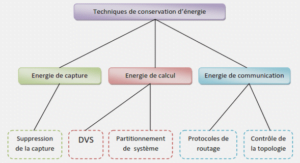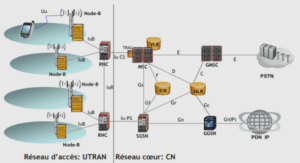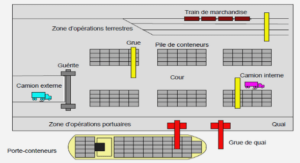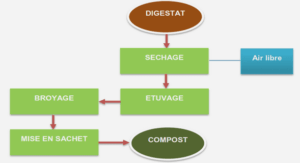Anode Manufacture Process
Experimental:
In this project, first an investigation has been carried out on raw materials in order to optimize the anode recipe. This part involves a review of production process in order to determine the problem points in the plant followed by the anode production with different particle size distributions. The relationship between the anode formulations and anode properties (permeability, air reactivity, and CO2 reactivity) were studied. This part was carried out at the Chalco plant in Guizhou, China. Then, a study on kinetics of anode baking is carried out at UQAC. In this part, the anode formulation that yielded the best properties in the previous part was chosen to simulate the baking process in the laboratory. The devolatilisation (tar, H2, and CH4) kinetics were investigated. Again, the anode properties were measured after baking the anodes under different conditions. This serves to determine the conditions that lead not only to improved anode quality but also more efficient utilisation of released volatiles to reduce the energy consumption. A schematic diagram of the experimental plan is shown in Figure 3.1. Via repeated trials following the experimental procedure, different production formulations, conditions, and parameters were tested and improved. The results were transferred to the plant for implementation in the plant operation .
Equipment for Devolatilisation Kinetics Measurement : Thermogravimetric Analyser (TGA) Coupled with Gas Chromatograph (GC):
Thermogravimetric Analyser (TGA)
The sample was tied by metal wires and then suspended from a balance for measuring the weight loss of anode sample during baking. The nitrogen gas was used as the carrier gas and protection gas for both TGA and gas chromatograph. The carrier gas nitrogen enters the furnace from the bottom. Rotameters R23 and R13 control the gas fiowrate. The carrier gas flowrate is not only important for the success of anode baking test but also important for the calculation of the amount of each volatile. During baking, part of the gas with a known flowrate was suctioned for analysis with GC. Both the main outlet gas and GC sampling gas was passed through a cold trap in order to separate the tar. In the cold trap, cold water with a temperature less than 4°C was recirculated. This prevents the blockage of the connection tubes and rotameters, thus, protects both TGA and GC system efficiently and make this system work well. It can be seen from the figure 3.12 that the gases for analysis (red line) pass through the condensable tank, glass wool filter and the rotameters Rl, R2 and R3. An automatic controller ensures the injection of gas for analysis. At that time, the valve Q3 closes, then Ql and Q2 open automatically and the sampling gas trapped in the injection coil flows in to the column. After GC injection, Ql and Q3 close, Q2 opens, the gas goes out directly due to suction. The rest of the outlet gas is pumped out by Pump 1A and Pump IB continuously.
Gas Chromato graph (GC)
The nitrogen gas was used as the carrier gas for the GC (Varian 3800) analysis. Compressed air was used for the injection valve operation. A known volume of sample gas was stored in the injection cycle and injected into the column with the help of this valve. An injector type 1061 was used. The column was packed with 13X molecular sieve. This type of column can separate hydrogen and methane well. After the injection, the column adsorbs all the gases, and desorbs each gas separately. GC was equipped with thermal conductivity detector. The thermal conductivities of the sample gas mixture were compared with that of the carrier gas which was flowing on the reference side of the detector. The Wheatstone bridge arrangement was used for the TCD measurements[51″ 53] Through the calibration of thermal conductivity vs. the gas concentration for each gas, their concentrations were determined from the areas of the desorption peaks. Table 3.6 the details of GC conditions for the gases analysis.
An example of hydrogen and methane peaks obtained during the experiments is displayed in Figure 3.13. This figure shows that H2 and CH4 peaks were separated quite well during the gas chromatograph test. The peak of methane always appeared after that of hydrogen.
Methodology:
Characterization and analysis of raw material
The raw materials used in anode production were tested for the trace elements content using Chinese Nonferrous Metals Industry Testing Standards YS/T 587[30] . These raw materials were analyzed using SEM-EDS. Samples were treated and polished using ASTM D 2797 .
Anode formulation experiments
The anode formulation experiments were separated into two groups. The small particle group for which the maximum particle size was less than 12mm was marked group A. The big particle group which had the particle sizes larger than 12mm was marked group B. In each group, different recipes were tested to determine the effect of each size fraction. Finally, a recipe which resulted in best anode properties (air reactivity, CO2 reactivity, and air permeability) among those tested was chosen for further analysis.
Thermogravimetric experiments and volatiles analysis
Small anode samples were prepared based on the best recipe obtained from the anode formulation experiment with the raw materials available in the Guizhou province of China using the same procedure followed by the industry. These anodes were baked in a thermogravimetric analyzer. The effects of the following baking parameters on the anode properties (CO2 reactivity, air reactivity, air permeability) were studied and correlated with anode preparation conditions.
Determination of kinetic parameters
Here the basis of calculation for the determination of kinetic parameters for the formation of H2, CH4, and tar is described. As there is no gas chromatography data available for tar, the instantaneous weight loss due to this component was found from the difference between the instantaneous total weight loss and the instantaneous weight loss due to H2, CH4 calculated using the GC data. After the calculation of the instantaneous rate of tar, the method of calculation of its kinetic constants is the same as those of H2 and CH4. Below, the general method for the calculation of kinetic parametrs is explained.
Determination of conversion (X) for each gas component:
A part of the outlet gas was withdrawn for analysis. Then, its methane and hydrogen content was analysed using a gas chromatograph equipped with a thermal conductivity detector. The detector response was calibrated for methane, hydrogen, and oxygen using calibration gases of known concentrations. Data on oxygen was used to detect if there was any air leak on the line and correct the gas concentration if necessary.
Calibration: The objective of calibration of gas chromatograph response is to find the relationship between the peak area and its corresponding concentration of a given gas component. The area under the peak obtained was measured with the software of the gas chromatograph. Thus, dividing the known value of concentration (ppm) by the area obtained using GC, the concentration as- ‘ppm per unit area (PPMA)’ for the particular component can be calculated. Using different concentrations, the calibration curve was prepared to use later on in the TGA-GC measurements.
Calculation of concentration of a component: The concentration of the component in ppm is equal to area of peak obtained by GC multiplied by PPMA for the component. However, the gas in the TGA always contains some air, i.e., air slightly dilutes the concentration of the component so the calculated ppm of the component is always less than the exact ppm on air-free basis. That is why the dilution ratio has to be determined and the correction has to be made.
Characterization and analysis of raw material:
For optimizing the anode properties (air permeability, air reactivity, and CO2 reactivity), first it was necessary to do an investigation in the Chalco plant in order to understand their anode production process and their operation. This was necessary for assessing the key points that could be improved as soon as possible and aligning the research project along with the results of this assessment. The results of the sampling and testing of the raw materials (pitch, dry aggregate which consists of coke, recycled butt and anodes) indicate which parts of the process need attention and help better focus the work. The anode quality optimization was based on a large number of single-factor as well as orthogonal experiments in order to adjust the specific production processes at the laboratory scale. The different production formulations, conditions, and parameters were tested repeatedly. Finally, the results of this project was implemented in the plant operation after the necessary technology transfer.
Result:
Investigation of green anode manufacting process
The coke is transported to the plant by train. At first, it is piled in the outside yard, waiting to be transported by trucks and scrapers into the storage. Then, it is passed through a crush line called a « pre-crush » process to adjust the coke particle size before the raw material is fed into the calcination kilns, After the *’pre-crush » process, the « pre-crushed » coke is moved into the calcination kilns by a conveyor.
Calcination
During the calcinations process, the green coke is calcined in large kilns up to 1200°C with the gas temperature around 1500°C. In the plant, the kiln is divided into three parts for the control of the calcination temperature. The part which is connected to the feeding bin is called the « tail », the temperature of this part is the lowest. The middle of the kiln is called the « body » at the highest temperature. The exit of the kiln is called the « head » at the medium temperature. Thus, the calcination takes place mainly in the « body » section. Afterwards, the calcined coke is fed into a cooling kiln to lower the temperature of the coke .
Green Mill and Forming
Before mixing and forming, all the raw materials are crushed, screened, and sized according to predetermined size distribution and added together to form a dry aggregate. This aggregate is then preheated to around 165°C and mixed with 15 wt% liquid pitch that is preheated to a temperature between 150°C and 180°C. Then, the anode paste is formed into a green anode block by the vibratory compaction .
Recycled Anode Clean-Up
The butts which are fed as part of dry aggregate are cleaned by removing the adhering impurities (bath material, see Figures 4.8 and 4.9) and are then crushed, screened, sized to two fractions (coarse 3-12mm and fine < 3mm ), and transported into the aggregate for anode production.
Correlation between anode formulation and anode properties :
the characterization and analysis of raw material have been discussed. The properties o the currently used anodes were determined in order to correlate the current anode recipe and anode properties. As shown in Chapter 4, Figure 4.19 shows the type of coke structure found in the anode paste. This is likely to increase the porosity and air permeability of the anode. Thus, the quantity of small particle size fraction group with maximum particle size less than 12mm was adjusted in the paste formulation experiments to increase the contact area of coke and pitch and to decrease the effect of coke porosity. The correlation between anode formulation and anode properties is discussed in this chapter.
Conclusions:
In this thesis, a small particle recipe (#11) was developed. This composition gave better results compared to those of the base recipe. The anodes with the new composition had less tendency to react with CO2 and air. Keeping the total baking time constant, when the maximum baking temperature was increased, it was observed that there was improvement in baked anode properties for the samples studied. The air permeability and the CO2 and air reactivity values decreased (percent residues increased). Thus, the anodes with a higher maximum baking temperature (for the same total baking time) had less tendency to react with CO2 and air under our test conditions. With TGA, it was observed that the rate of formation of tar was less for lower heating rate.
|
Table des matières
Chapter 1
Introduction
1.1 Background
1.2 Statement of the Problem
1.3 Scope
1.4 Objectives
Chapter 2
Literature review
2.1 Anode Manufacture Process
2.2 Raw Materials
2.3 Anode Baking Process
2.4 Anode baking optimization
2.5 Pitch volatiles
Chapter 3
Experimental
3.2 Experimental Set-up
3.2.1 Equipment for anode preparation in laboratory:
3.2.2 Equipment for Devolatilisation Kinetics Measurement :
Thermogravimetric Analyser (TGA) Coupled with Gas Chromatograph
(GC)
3.3 Methodology ;
3.3.1 Characterization and analysis of raw material
3.3.2 Anode formulation experiments
3.3.3 Thermogravimetric experiments and volatiles analysis
3.4 Model for devolatilization kinetics
3.4.1 Determination of kinetic parameters
3.4.2 Determination of conversion (X) for each gas component
Characterization and analysis of raw material
4.1 Introduction
4.2 Results
4.2.1 Investigation of green anode manufacting process
4.2.2 Preliminary Experiments:
4.3 Discussion of results
4.4 Summary
Chapter 5
Correlation between anode formulation and anode properties
5.1 Introduction
5.2 Results
5.2.1 The results of small particle size recipes
5.2.2 The results of big particle size recipes
5.3 Results of the tests on the actual production line and discussion
5.4 Summary
Chapter 6
Thermogravimetric experiments and analysis of devolatilisation kinetics
6.1 Introduction
6.2 Results
6.2.1 Thermogravimetric experiments
6.2.2 Volatiles analysis
6.3 Discussion of results
6.4 Summary
Chapter 7
Conclusions and Recommendations
![]() Télécharger le rapport complet
Télécharger le rapport complet






